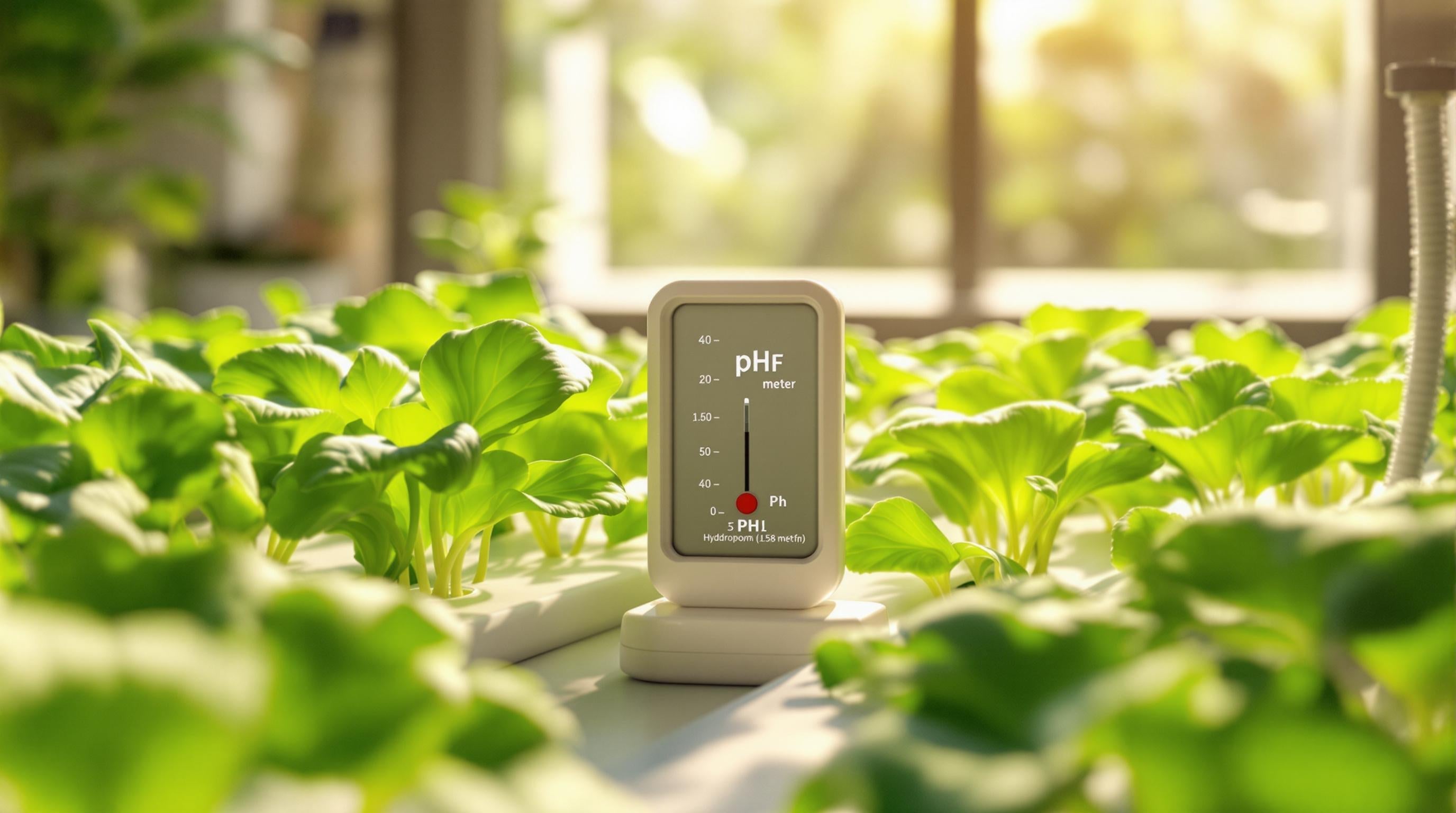Managing pH in Hydroponics: Essential Practices for Healthy Growth
The Importance of pH in Hydroponics
Maintaining proper pH levels is vital for plant health and nutrient absorption in hydroponic systems. Even small shifts outside the optimal range can trigger nutrient lockout, leading to poor plant performance.
Optimal pH Range for Hydroponic Plants
-
Ideal Range: 5.5 to 6.5
-
Below 5.5: Risk of root damage and calcium deficiency
-
Above 6.5: Leads to micronutrient lockout and chlorosis
Common pH-Related Issues in Hydroponics
High pH
-
Symptoms: Yellowing between veins, stunted growth
-
Causes: Hard water, overuse of pH-raising agents
-
Nutrients Affected: Iron, manganese, zinc, copper
Low pH
-
Symptoms: Root burn, aluminum toxicity, calcium deficiency
-
Causes: Excess use of acidic adjusters
-
Damage Timeline: Can harm roots in 24–48 hours
Unstable pH
-
Symptoms: Rapid fluctuations in readings
-
Causes: Poor water quality, nutrient imbalance, evaporation
Troubleshooting pH Problems
| Problem | Symptoms | Recommended Solution |
|---|---|---|
| High pH | Yellowing leaves, stunted growth | Add pH down (phosphoric acid) |
| Low pH | Root damage, calcium issues | Use pH up (potassium hydroxide) |
| Unstable pH | Fluctuating levels | Improve water quality, use buffers, monitor daily |
Daily pH Monitoring Tips
-
Frequency: Test at least once a day
-
Tools: Use digital pH meters like Bluelab pH Pen
-
Accuracy: Let the nutrient solution mix 15–20 mins before retesting
Buffering and Stabilization
-
Use buffers like potassium phosphate
-
Consider organic stabilizers like fulvic acid and seaweed extract
Adjusting pH Levels
Lowering pH
| Product Type | Active Ingredient | Adjustment Time | Best For |
|---|---|---|---|
| Phosphoric Acid | H3PO4 | 15-20 minutes | Large systems |
| Citric Acid | C6H8O7 | 20-30 minutes | Small systems |
| Commercial pH Down | Mixed acids | 15-20 minutes | All systems |
-
Tip: Always add adjuster to reservoir water, not directly on roots
-
Note: Warmer water needs less adjuster
Raising pH
-
Use pH up solutions: potassium or sodium hydroxide
-
Adjust based on plant stage:
-
Vegetative Stage: Aim for ~6.0
-
Flowering Stage: Lower to 5.5–5.8
-
Example: Hydroponic Tomatoes
-
Vegetative: pH 6.0
-
Flowering: pH 5.5
pH Testing Equipment Overview
| Method | Accuracy | Cost | Ideal For |
|---|---|---|---|
| Digital Meter | ±0.1 pH | $80-200 | Daily monitoring |
| Chemical Kit | ±0.5 pH | $15-30 | Backup testing |
| Test Strips | ±1.0 pH | $8-15 | Quick checks |
Top pH Control Products
-
Adjusters: General Hydroponics pH Up/Down
-
Buffers: Green Genius buffer solution
Organic Alternatives
-
Lower pH: Citric acid
-
Raise pH: Dolomitic limestone
-
Tip: Monitor closely, as natural methods vary in effectiveness
Proactive pH Management
Testing Schedule
-
Twice Daily: Morning and evening
-
Log Details: Record pH, date, and any actions taken
Mixing Nutrients Correctly
-
Add nutrients one by one to room-temperature water
-
Allow full dissolution between each
-
Pre-mix to stabilize solution
Ensuring Water Quality
-
Use filtered or dechlorinated water
-
Avoid hard water (can raise pH)
-
Monitor RO water more often due to low buffering capacity
System Maintenance
-
Clean reservoirs and lines monthly
-
Replace nutrient solutions every 2–3 weeks
Summary: Key pH Management Tips
-
Monitor and adjust pH consistently
-
Use quality testing tools and adjusters
-
Adapt pH levels to each plant growth stage
-
Maintain good water and nutrient practices
Conclusion
Keeping pH levels in check ensures optimal nutrient uptake, healthier plants, and better yields in hydroponic systems. Combine consistent monitoring with the right tools and techniques to prevent common pH-related issues and support robust plant growth.
FAQs
1. How can I naturally lower pH in hydroponics?
Use citric acid or white vinegar for small, short-term adjustments. Monitor closely and avoid overuse.
2. What causes high pH in hydroponics?
Common culprits include hard water and overuse of pH-up solutions. Always test water quality.
3. Are digital pH meters better than test strips?
Yes. Digital meters are more accurate and reliable for daily checks.
4. How often should I check pH in my system?
Twice daily is ideal, especially in systems prone to fluctuations.
5. What is the best pH for hydroponic flowering plants?
A slightly lower pH of 5.5–5.8 enhances nutrient absorption during flowering stages.

